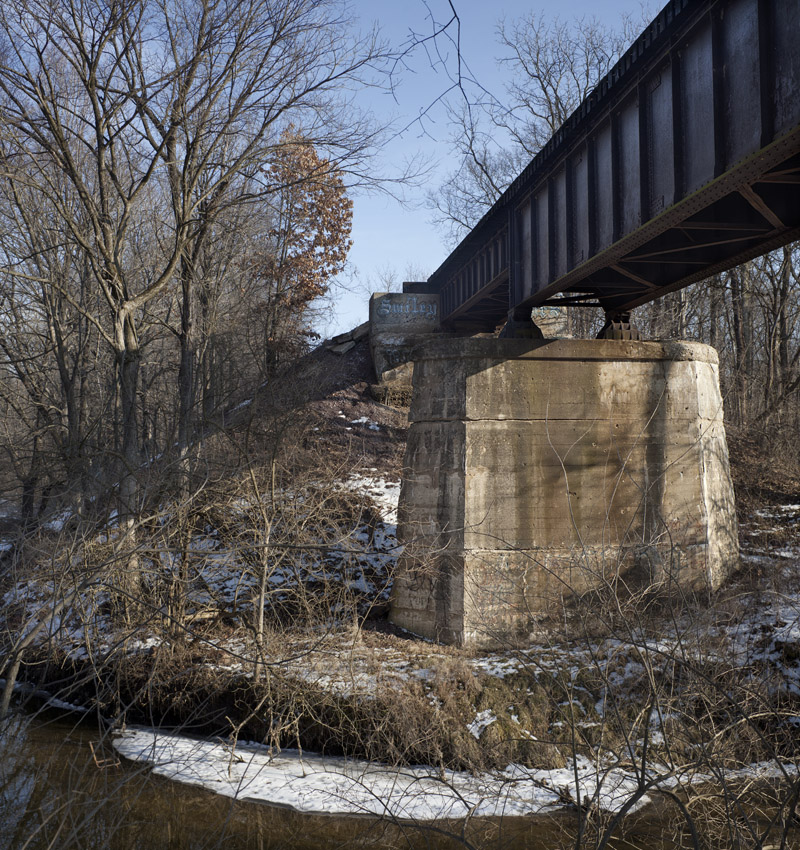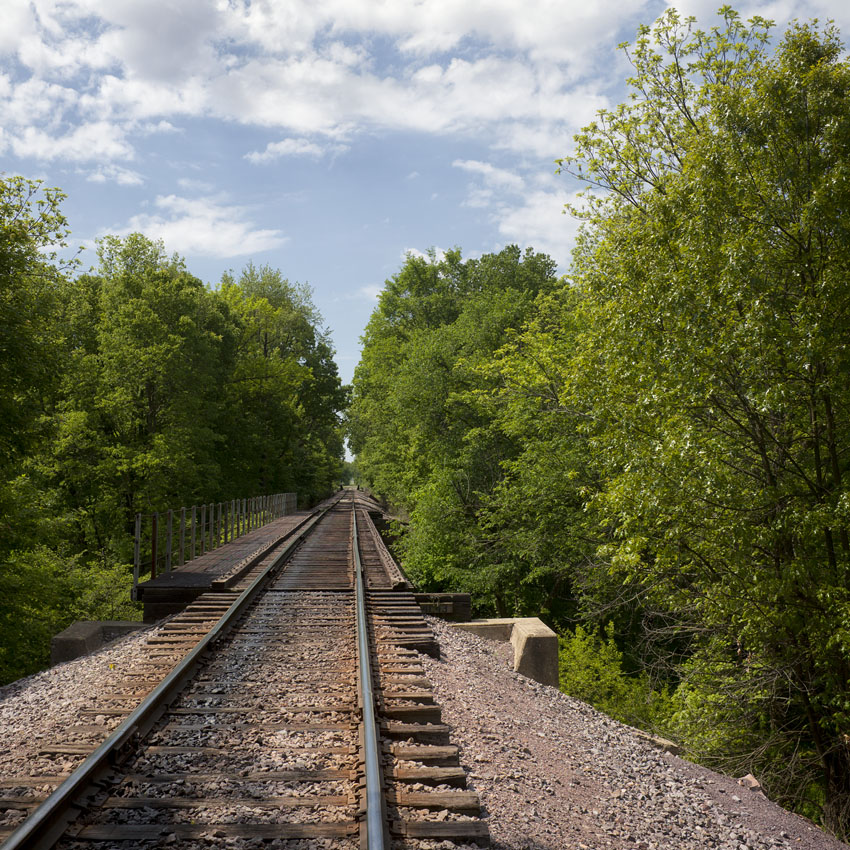Tom Robbins
Member
Much of the work enabling wheels to roll and commerce to exist in the US was done years ago, and the resulting infrastructure remains out of sight of most folks traveling through the landscape. This is as it should be, especially for railroads where the transportation of goods was the primary goal.
The railroad beds, concrete bridge footings, multiple layers of ballast, and the rails themselves have a greater connection to the past than the steam and diesel locomotives that ran along them through the decades. The effort to construct such things was considerable, yet the view of them these days is often limited to railroad engineers and maintenance workers.
An example is an old seldom-used trestle spanning a minor creek in the middle of nowhere, half an hour's drive from my house. The first view of the thing is from the creek taken January 31, and the second is from the top of the rail bed taken this morning:

Trestle Over Indian Creek

Trestle Over Indian Creek II
There is nothing special about either photo. Also nothing special about the subject. But that's my point, pretty much. The most ordinary infrastructure, even when it is in full view of passersby, is seldom noticed and rarely appreciated.
The railroad beds, concrete bridge footings, multiple layers of ballast, and the rails themselves have a greater connection to the past than the steam and diesel locomotives that ran along them through the decades. The effort to construct such things was considerable, yet the view of them these days is often limited to railroad engineers and maintenance workers.
An example is an old seldom-used trestle spanning a minor creek in the middle of nowhere, half an hour's drive from my house. The first view of the thing is from the creek taken January 31, and the second is from the top of the rail bed taken this morning:

Trestle Over Indian Creek

Trestle Over Indian Creek II
There is nothing special about either photo. Also nothing special about the subject. But that's my point, pretty much. The most ordinary infrastructure, even when it is in full view of passersby, is seldom noticed and rarely appreciated.
